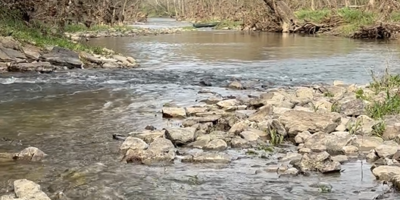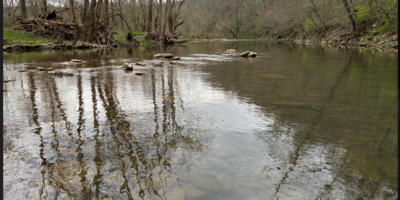Another Creative for Common Sense position paper.
Two recent downtown traffic developments have piqued the curiousity of we Creatives for Common Sense. First has been the admission by Downtown Development Authority Executive Director Jeff Fugate that creating a vibrant and workable downtown–and not the specific creation of two-way streets–should be the primary goal of any city project. Second has been the recent “modest proposal” for downtown traffic realignment proffered by NoC writer David Shattuck.
Accordingly, we Creatives endeavored to create our own downtown traffic model, one that embraces Fugate’s desire for a workable and holistic downtown, and one that eschews Shattuck’s plans for minor “holistic medicine” in favor of performing radical surgery on our downtown traffic arteries.
CfCS traffic projection models are based on two general assumptions: (1) cars are fucking expensive, spew shit-tons of harmful carbon energy into the air, and generally help condition us to become economically unhealthy anti-social slobs; (2) therefore, in the somewhat-near future we will be (or ought to be) prioritizing less of our precious public transportation space to their existence.
The nut of the CfCS plan involves keeping Main, Vine and Short Streets one-way while reducing by one the number of auto-traffic lanes in operation on each of the three thoroughfares. In short, we envision re-engineering Main/Vine/Short streets to include (1) a two-lane, barriered-off inner-city bike/horse highway, (2) a public transport/emergency vehicle lane running next to it, and (3) a single one-way lane reserved for commercial/private traffic. This design pattern, our models indicate, will calm traffic traveling upon the city’s major thoroughfares, promote pedestrian life and healthy communities, and reduce the city’s atrociously large carbon footprint and its financial commitment to road maintenance.
Calm carbon-burning traffic
Current downtown traffic models assume that increases in downtown auto traffic will calm (slow) street traffic and enliven pedestrian commercial activity. CfCS models, however, suggest that the same goal can be accomplished by funnelling fewer automobilies onto decreased amounts of road space. Here is why:
Our CfCS ad-hoc Subcommittee on Traffic Analysis models indicate that an estimated 20 percent of downtown auto-goers will become so enraged by changes proposed in the CfCS plan that they will pledge via an avalanche of Lexington Herald Leader Discus comments to never ever drive downtown again. Yet despite the expected plunge in auto traffic entering downtown, CfCS models predict that as the remains of downtown traffic get forced onto fewer roads, a traffic calming (which is to say traffic-causing) effect will occur similar to the two-way proposals.
Unlike two-way proposals, though, we CfCSers are mindful that in choosing to calm our gas-burning auto traffic, we also potentially choose to increase our county’s carbon emissions. Writing in North of Center, David Shattuck has cited an Austin, Texas traffic study that projected a 10-13 percent increase in air pollution levels that would accompany the city’s plan to switch to slower-moving two-way streets. A 2007 Lexington traffic study reached similar conclusions. Conversion to two-way streets, the report concluded, would lead to “higher vehicle emission levels (air pollution)…as a result of the increased congestion.”
The CfCS plan, by comparison, creatively offsets any potential carbon emmissions gains. Its reliance on one-way streets, which move traffic more efficiently through space than two-way roadways, will provide an immediate cut in projected emissions. In addition, our Emissions Reading Group comrades have argued that Lexington might feasibly experience a net decrease in carbon emissions. Between those who refuse to drive on a single lane of downtown track, and those who transition into public and alternate forms of transportation, our Emissions team projects Fayette carbon emissions to decrease. Their ideas, admittedly, are crude and in need of refinement and further theorization, but initial evidence suggests that less cars on the road generally means less climate destabilizing pollution, particularly if bolstered by a robust and diverse public transportation system of peds, bikes and busses.
Stimulate calorie-burning traffic
In addition to mitigating the tonnage of Fayette County carbon released into the air, the CfCS plan also endorses alternate modes of transportation that promote healthy living. A singular reliance upon personal and commercial automobile traffic–important modes of transportation, to be sure–has had the byproduct effect of contributing to our inactive and unhealthy lifestyles. We estimate that fully one-half or more of Main, Vine and Short will be given over to more efficient carbon-burning (bus) and calorie-burning (walking, riding) forms of public transportation.
Ideally, the realigned streets shall provide an entryway for a county-wide commitment to bike paths and bus routes that connect our neighborhoods and commercial centers. Lexington’s suburban grid, which sits atop the city’s eighteenth-century wagon-and-spoke system, is ideally suited for bike and bus travel. By creating a multi-modal downtown transportation grid that encourages walking and biking, the city will provide a centerpiece to which future transportation developments may seek to connect.
Transportation economics
Carbon-emitting based traffic solutions also require significant amounts of capital to construct, operate and repair roads and garages. Consider Ninth District councilmember Jay McChord, Lexington’s most bike-friendly councilmember, whose website boasts his efforts generating $2.5 million in funding for a variety of biking and walking trails at neighborhood parks located throughout the county. The funding, while significant and evidence of McChord’s clear commitment to healthy activity, nevertheless pales in comparison to the $55 million in local, state and federal funds he directed into Lexington road projects. When even the most ardent political supporter of bike-use operates at a 20-1 funding disadvantage, it should be a sign that costs are out of control.
One chief reason for high automotive costs is that construction and maintenance of roads and parking structures compels cities to make significant long-term financial commitments. Discussions of Rupp Arena’s expansion, for example, have often been accompanied by the corollary need for tens of millions of dollars to create the parking capacity (i.e., parking garages) necessary to store the increased amounts of cars that the rehabbed arena expects to attract. Likewise, roadways are no cheap propositions, and more traffic means more maintenance costs. The CfCS structural attention to public transportation should be viewed as an economic win for the city. By mitigating car-traffic, our design reduces the amount and costs associated with road repairs.
Meanwhile, costs for bike and pedestrian thoroughfares are cheap by comparison, and they require less maintenance. A group of active biking citizens, for example, recently installed four miles of mountain bike trails at Veteran’s Park for a cost of $30,000. For those keeping tabs, four miles is near the distance from downtown to Zandale Center, traveling south on Limestone/Nicholasville Road—and just about the average distance of most carbon-burning car trips.




Leave a Reply